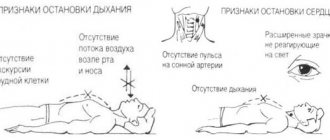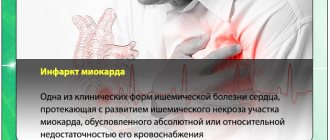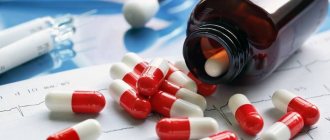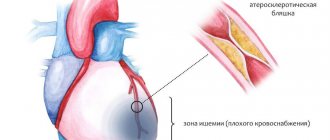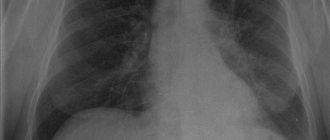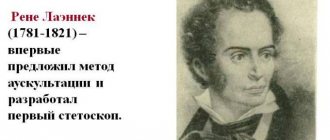Make sure you're safe
Observe the European Resuscitation Council Resuscitation Guidelines (Revised 2020) at the scene before administering first aid.
If something threatens your safety, such as exposed wires or a fire, do not approach the victim. Call rescuers on 112 or fix the problem yourself, say, remove the broken glass. If possible, wear disposable gloves and goggles to protect you from contact with blood and saliva.
Check your breathing
Lean your cheek towards the victim's open mouth. For 10 seconds, listen carefully to your breathing, feel the flow of air on your skin and watch how your chest moves. During this time, the person must take at least two breaths. If he is not breathing, continue to the next step.
If a person breathes rarely (less than twice in 10 seconds), noisily or barely audible, consider that there is no breathing and get ready to perform resuscitation.
Do not check your breathing with a speculum or feather. Such methods are unreliable and time-consuming. Don't try to check your pulse; it takes practice to get it right.
Rules for conducting resuscitation massage
Before performing indirect cardiac massage, it is necessary to find out whether there is a pulse, as well as respiratory processes. If they are absent, a number of mandatory actions should be performed before starting cardiac massage and ventilation.
- Place the person straight, preferably on a flat, hard surface.
- Loosen clothing and determine the pressure point.
- Kneel next to him on the side that is comfortable for you.
- Clear the airways of possible vomit, mucus, and foreign objects.
- An adult is given a heart massage with two hands, a child with one, and an infant with two fingers.
- Repeated pressure is applied only after the sternum has completely returned to its original position.
- The norm is considered to be 30 impacts on the chest, per 2 breaths, this is justified by the fact that when impacting the sternum, passive inhalations and exhalations occur.
How to resuscitate a victim: the actions of one person
One person can perform indirect cardiac massage and artificial respiration himself. Initially, the “preparatory” actions described above are performed, after which the execution technique algorithm should be as follows:
- Initially, two air injections are made, each lasting 1–2 seconds. After the first blowing, you need to make sure that the chest drops (the air comes out) and only then make the second blow. It can be done by blowing through the mouth or nose. If artificial ventilation of the lungs is carried out through the mouth, then the nose is pinched with the hand, if through the nose, then the mouth is secured with the hand. In order to protect yourself from the possibility of pathogenic microflora entering your body, you need to inflate through a napkin or handkerchief.
- After the second injection of air, begin chest compressions. Your arms should be straight, their correct position is described above. Controlling the strength, apply 15 pressures.
- Repeat the steps from the beginning. Resuscitation should continue until emergency assistance arrives. If 30 minutes have passed since the person began to “revive”, and no signs of life (pulse, breathing) have appeared, then biological death is declared.
If indirect cardiac massage and artificial respiration are performed by 1 person, the frequency of effects on the chest should normally be about 80–100 compressions per minute.
How should a victim be resuscitated? Actions of two people
If indirect cardiac massage and artificial respiration are performed by 2 people, then the algorithm and technique are different. Firstly, it is much easier for two people to perform resuscitation, and secondly, each of those providing assistance is responsible for a separate process, cardiac massage or ventilation of the lungs. The technique for performing resuscitation is as follows:
- The person performing artificial respiration kneels at the head of the victim.
- The person responsible for the process of indirect massage places the hands on the patient’s sternum.
- Initially, two injections are made into the mouth or nose.
- Afterwards, two impacts on the sternum.
- Insufflations are repeated again after pressing.
The normal frequency of compressions during resuscitation by two people is about 80 times per minute.
Features of children's resuscitation
The main differences (features) of resuscitation in children are as follows:
- using only one pussy or only two fingers;
- the frequency of pressure for infants should be about 100 times per minute;
- the depth of breast descent during compression is no more than 1–2 cm;
- During resuscitation, children are given air blowing through the oral cavity and through the nasal canals, the frequency of blowing is about 35–40 times per minute;
- Since the volume of the child’s lungs is small, the air blown in should not exceed the volume that can be accommodated in the resuscitator’s mouth.
Remember that you can bring a person back to life only for the first few minutes after cardiac arrest, so do not hesitate, but immediately begin resuscitation actions.
Share the article on social media. networks:
Do 30 chest compressions
This technique is suitable for adults and adolescents who look older than 14 years. Read below about how to perform resuscitation on young children.
Lay the victim on his back on a hard surface and kneel at his side. Free your chest from clothing. It is very important to find the right place for chest compressions: the effectiveness of resuscitation largely depends on this.
Place the heel of your hand just below the center of the sternum (the bone to which the ribs are attached). Place your other palm on top and interlock your fingers. Straighten your elbows and keep your shoulders directly above your hands.
Press the sternum with all your weight, pushing it down 5-6 cm at a rate of 100-120 compressions per minute (about twice per second). Before making the next press, do not lift your hands and wait until your chest straightens.
How to do indirect cardiac massage?
Resuscitation efforts begin immediately. Without being distracted, they record the start time, call for help, and call the cardiology team. Carrying out the technique of indirect cardiac massage consists of several rules:
Find the point of application - the border between the middle and lower third of the sternum, or a place 2 fingers above the xiphoid process.
- place the patient on his back using a hard surface (floor, table, ground, asphalt);
- place the hands crosswise (one on top of the other), clasping the fingers of the upper hand around the lower one;
- find the point of application - the border between the middle and lower third of the sternum, or a place 2 fingers above the xiphoid process;
- compression movements are performed using the weight of the whole body;
- the number of pressures on the chest should be 30, then two breaths are taken from mouth to mouth (a combination of artificial respiration and external cardiac massage);
- if there are two rescuers, use the scheme - 15 pressures and 1 breath;
- the periods between compressions should be minimal (keep a pace of 100 movements per minute);
- The compression force is determined by the elasticity of the chest (compress to a depth of at least one third of the chest diameter - 4-5 cm).
Compression movements are performed using the weight of the whole body.
The number of pressures on the chest should be 30, then take two breaths from mouth to mouth. This massage is effective if the chest expands evenly, chest movements correlate with pulse waves in the vessels, blood pressure increases, the color of the skin approaches natural, the pupils become constricted and their reaction to light, and their own heart contractions and respiratory activity are restored.
Read also: Jellyfish sting: consequences and what to do if you are stung by a jellyfish.
Potential consequences of resuscitation may include fractures of the ribs, sternum, pneumothorax (damage to the pleura and lung tissue), hemothorax (accumulation of blood in the pleural cavity), liver rupture, reflux of stomach contents into the oropharynx and aspiration into the respiratory system.
Give two artificial breaths
Film valve for artificial respiration
Artificial respiration can be dangerous if performed on a stranger. If you don’t know how to do this or are afraid of getting infected with something, limit yourself to chest compressions only. For personal protection, you can use a CPR valve film.
After 30 compressions, tilt the victim’s head back again to clear the airways. Pinch your nose with your fingers, open your mouth and tightly cover the latter with your lips. Inhale evenly to the victim for 1 second. Watch your chest: it should rise. If there is no movement, tilt your head back again and take a second breath. All this should take no more than 10 seconds.
In what cases is it used and what is it aimed at?
Indirect cardiac massage (also external or closed) in medicine is called a resuscitation measure, the purpose of which is to maintain blood circulation.
The principle of the procedure is that rhythmic compression of the organ imitates its natural functioning and helps restore cardiac activity.
Problems with blood circulation can be caused by congenital and acquired diseases, overdose of drugs or medications, road accidents, electric shock, etc.
The indication for the beginning of the body's revival is clinical death - the process of dying, which is characterized by the absence of external signs of life, while metabolism in tissues and brain function are still preserved.
The transition period lasts up to ten minutes after the heart stops, then the brain is destroyed and restoration of vital functions becomes impossible.
How to determine whether a person has reached clinical death or whether it has already entered the biological stage?
| Clinical death | Biological death |
|
|
The main reason for resuscitation is always complete cardiac arrest. The rescuer must make sure that there is no heartbeat and only then begin to revive the body. Also, a prerequisite for the procedure is a constant assessment of the condition of the person being resuscitated.
Read also Sunburn: symptoms, first aid and treatment
The effectiveness of the procedure is assessed by the body returning to normal.
The person being resuscitated must:
- feel the pulse (the pulse is considered stable if it does not stop for several minutes);
- blood pressure increases;
- pupils move (constriction);
- skin tone normalizes;
- the ability to breathe will be restored.
How to perform cardiopulmonary resuscitation on children
Checking for signs of life in children is the same as in adults. If the child is unconscious and not breathing, call an ambulance and continue according to the following algorithm: European Resuscitation Council Resuscitation Guidelines (Revised 2020).
Give five artificial breaths. For children who appear to be between 1 and 14 years of age, proceed as for adults, but infants should cover both their nose and mouth with their mouth at the same time.
After this, check your breathing again. If it is not there, begin resuscitation in a ratio of 15 compressions (at a frequency of two per second) and two artificial breaths. Apply pressure to a depth of one-third of the thickness of the chest. If the child is small, use one hand; if older, use two.
For infants under 1 year of age, pressing is performed with the fingers. To do this, grab the baby so that your thumbs are on top of the sternum. Locate the xiphoid process - this is where the lower ribs meet the sternum. Step back 1–1.5 cm from its edge and place your thumbs above the sternum. Pressing can also be done with the middle and index fingers at the same point.
Algorithm and execution rules
How effective the resuscitation will be depends on the technique of execution.
Incorrect hand position and disrupted sequence of steps can lead to complications: rib fractures, tamponade, pneumothorax, ruptures of internal organs (incorrect posture will also lead to a decrease in the frequency of pressure and subsequent cessation of revival due to fatigue of the resuscitator). It is the correct placement of hands that often determines the success of an event.
Some complications (tamponade, pneumothorax, pectus excavatum) may become contraindications to further care.
Closed cardiac massage is a specific algorithm of action that should be followed for greatest effectiveness and to avoid complications:
- the victim should lie on his back, on a hard surface with his head thrown back and legs raised;
- The chest, neck and stomach should not be squeezed, so unfasten the buttons at the throat, loosen the belt;
- ensure airway patency - the oral cavity should be clean and free of mucus, vomit, and blood;
- The resuscitator should be positioned on the side so that the shoulders are above his chest (you can stand on either side, but for right-handed people the position on the right is more convenient, and for left-handed people on the left);
- the correct location of the hands is selected in stages: find the junction of the lower ribs with the sternum, step back two fingers up and place the base of the palm on the found point;
- before the body begins to revive, a precordial blow is performed - a manipulation performed once along the interpapillary line in the center of the sternum, applied with a fist from a height of no more than 30 centimeters, without a swing (sometimes even with one blow you can restore blood circulation so that the heart starts working, but if the condition does not improve followed, then proceed to resuscitation);
- clasp your fingers together (the thumb of your main hand should be positioned in such a way that it points either to the chin or to the legs).
Compression technique:
- should be pressed strictly perpendicularly and with straightened arms;
- the place where the hands are applied should not change (displacement of the point of pressure can cause fractures, hematomas, ruptures);
- the chest should be pressed 3-5 centimeters, the optimal rate of compression is 60-100 per minute;
- you need to keep your hands tightly pressed to your chest;
- pressure should be resumed only after the chest returns to its original position;
- It is important to observe the rhythm of the pressure and the force applied when pressing.
External cardiac massage is inseparable from artificial ventilation, together they are called cardiopulmonary resuscitation (CPR).
Depending on the number of rescuers, the resuscitation technique changes:
| Rules for carrying out by one resuscitator | Rules for carrying out by two resuscitators |
|
|
Read also First aid for arrhythmia, symptoms and treatment
The time of the procedure depends only on the success of the actions taken, the arrival of an ambulance or your physical condition (broken ribs do not affect the duration of resuscitation). With 80-100 compressions on the sternum per minute, the minimum massage duration is 15-20 minutes. The maximum period depends on the improvement of the condition or the onset of biological death.
Another method of revitalizing the body is also used - direct heart massage. With it, the resumption of blood flow is carried out using surgical intervention.
An operation is performed on the open sternum, during which the doctor imitates the work of the heart, squeezing the organ in his hands with a frequency of 60-70 compressions per minute. These resuscitation actions are prohibited from being performed in the absence of professional training and outside a hospital setting.
At the moment, preference for resuscitation is given to indirect massage, and the use of direct massage may be due to:
- circulation disorders in the early postoperative period;
- circulatory disorders due to injury;
- circulation problems during breast surgery.
